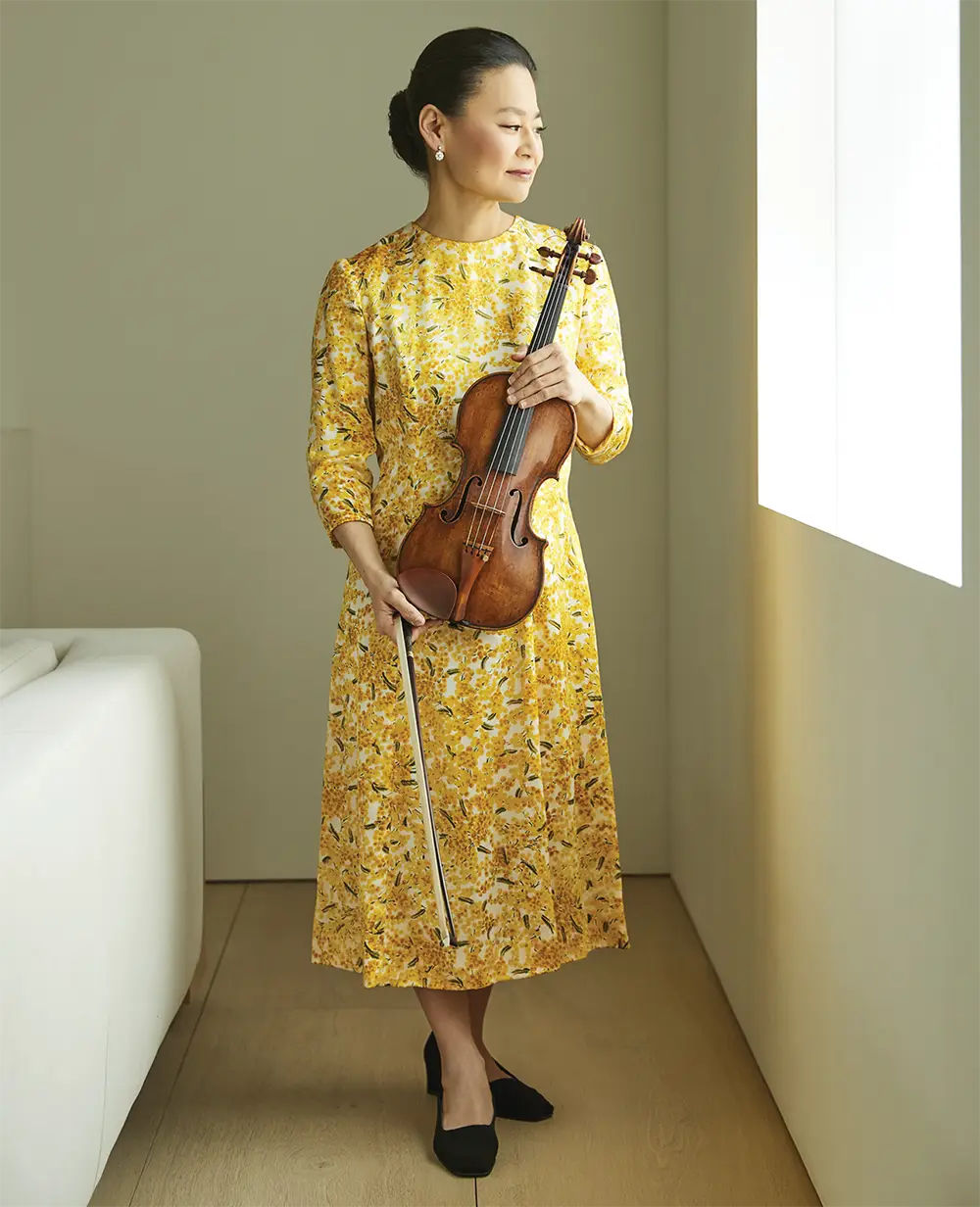
MIDORI
I consider my violin to be my partner in music-making. It is almost 300 years old, with so much history animating it. Any number of renowned violinists have played this august instrument over time, so that it is a repository of our legacy of iconic music — a keeper of many secrets, as it were — now abetting me in my own forays as an interpreter of so many amazing works that have enriched and continue to enrich humankind through the centuries.
For me, this instrument is all but alive. When I hold my violin in my hands, I know it so well. I feel that the violin has a personality, it has force of character, and its particularity has become a part of what I do.
After several hundred years, this violin does not merely defer. A long-lived instrument, one that requires ongoing maintenance (at certain times it must be deeply cleaned, or a new bridge is needed, the fingerboard planed, etc.), it is changeable and it is challenging. It plays differently from day to day, depending on the weather and the atmospheric conditions in a performance space. But that constant challenge, of responding to the different colors this great instrument provides in different circumstances — it inspires me.
An instrument of so many moods and needs, my violin forces me to work hard to commune with it successfully. In return, it has so much to offer, an incredible range of colors and sounds. Its sound can be rich but also velvety at times and light as a feather at other times. The music it is prepared to yield is crystal clear, deep and complex — all at the same time.
A great instrument, tested over centuries, ever changing and ever deepening, does not merely succumb to any player, but through joined effort it offers great rewards. My violin may be a “diva” (as my luthier calls it), but I respect its lineage and its prideful uniqueness. Music-making is a living process, and I work hard to bring out this instrument’s brilliance, allowing our music to reach toward a higher place.
This partnership spurs me ever forward, now over decades. I continue to strive to interpret great compositions of many eras both thoughtfully and boldly, while carrying our art form forward into future realms. In today’s increasingly interconnecting world, I pursue the added goal of bringing music to people who in some ways are left out, who often don’t have ready access to live performance (because of trying circumstances or where they live) — in the doing providing joy, consolation, solace, healing, contemplation. My violin, finicky as it may be, has survived and thrived over centuries, and so long as I treat it carefully and lovingly, we can sing out together, sharing an endless range of timeless ideas and beauty — and, hopefully, inspiration.